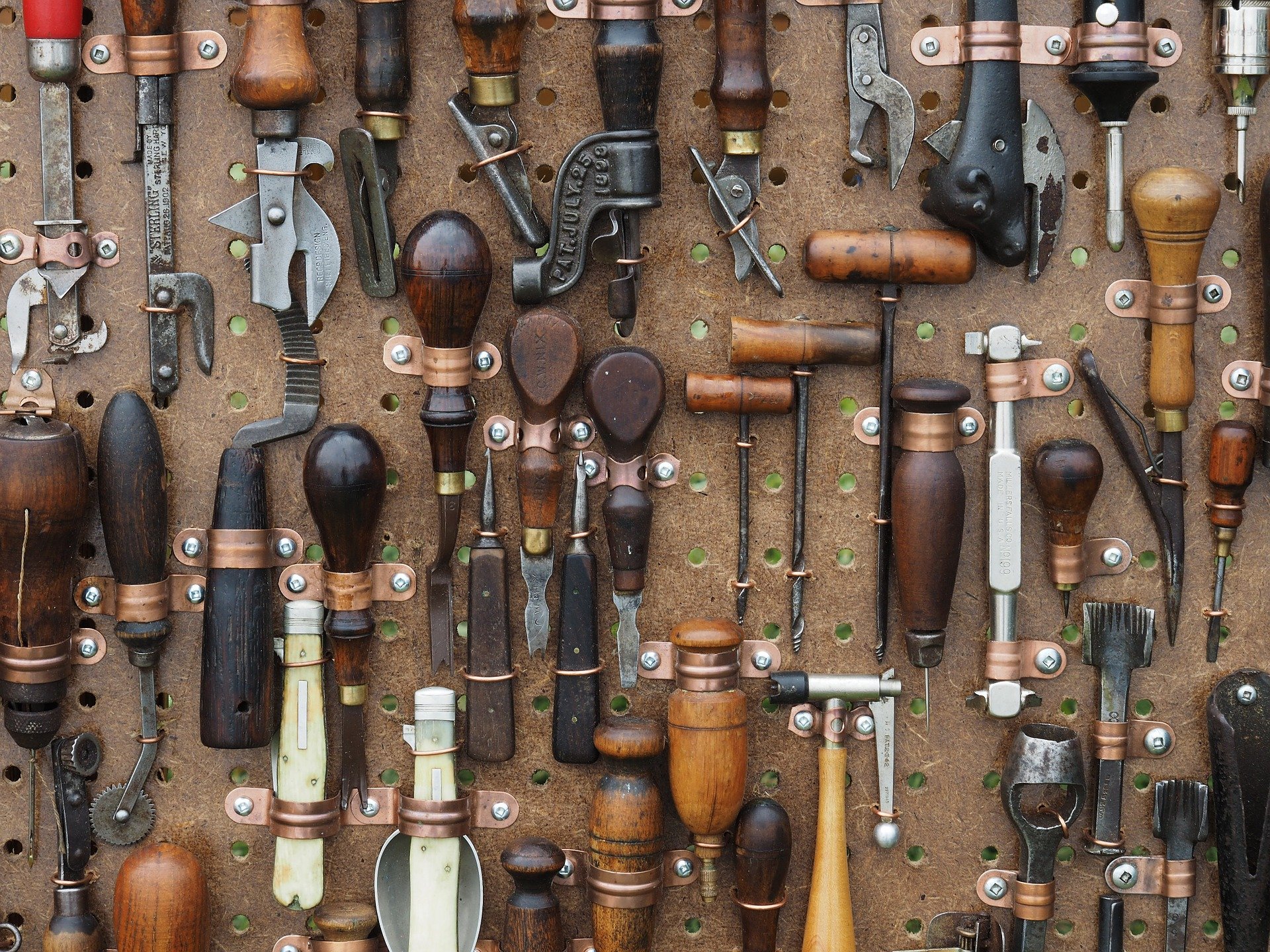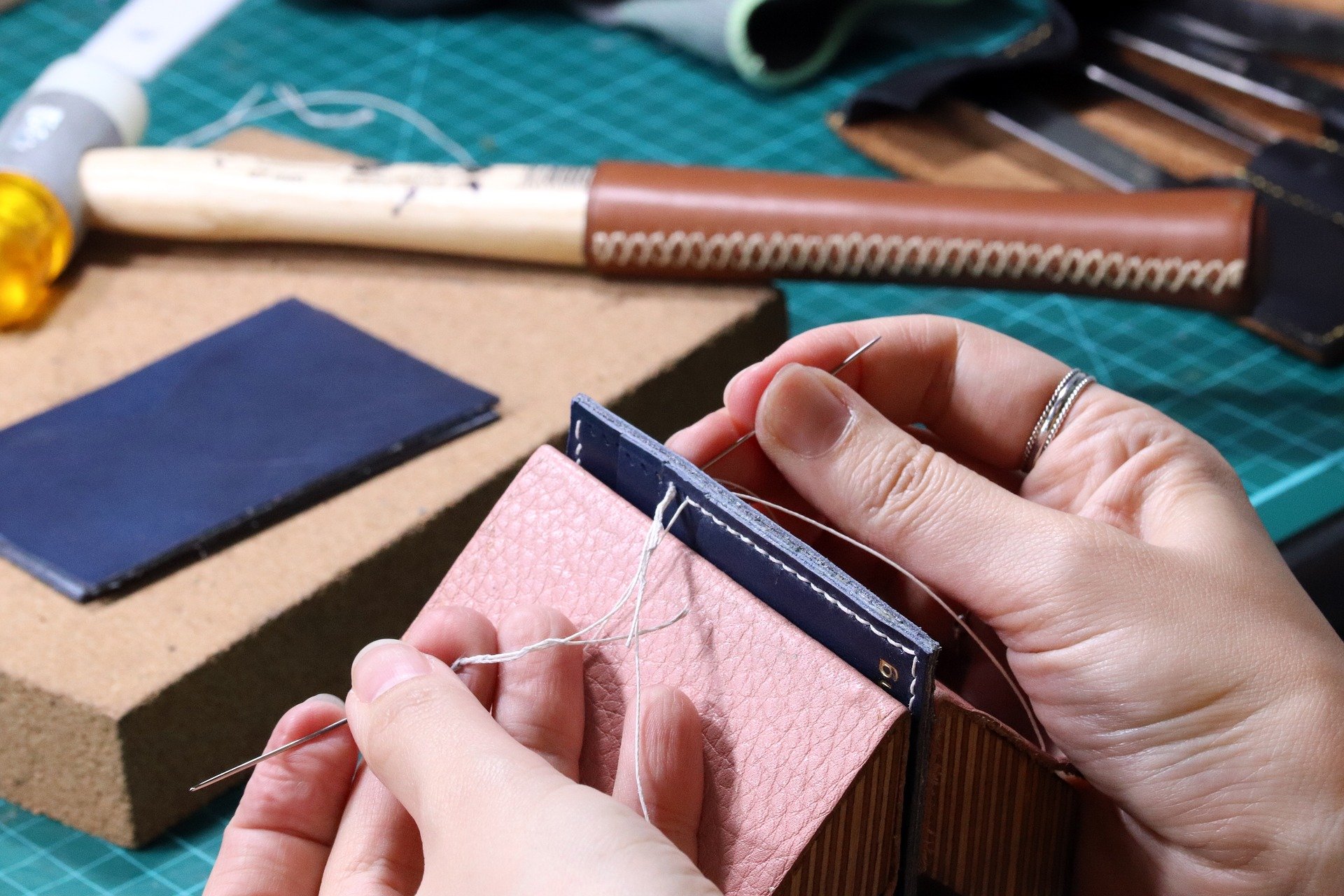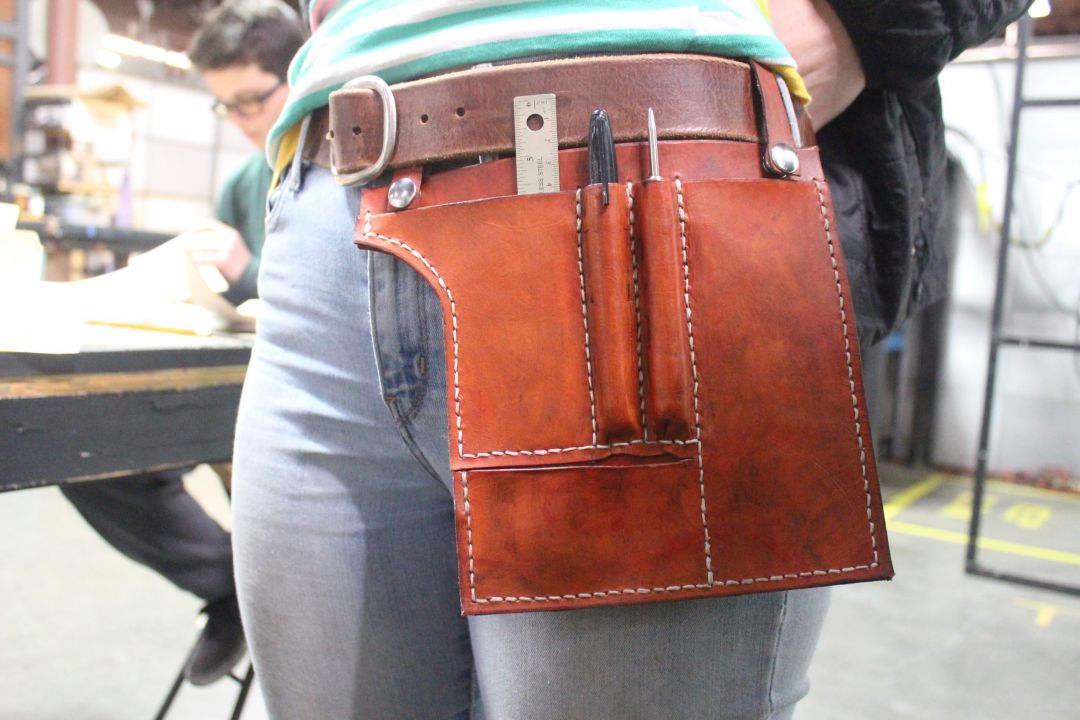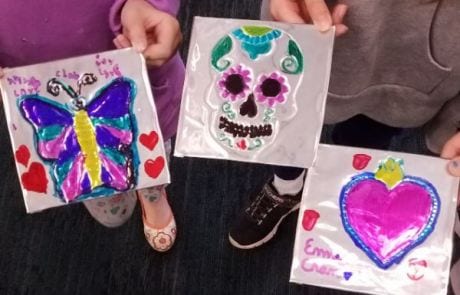Can I Use Leather Tools on Metal Art Work
Leatherworking 101: A how-to guide to learning leather crafting
Leather Earth
Leatherworking 101: A how-to guide to learning leather crafting
By Kristin Arzt
Leatherworking 101: A how-to guide to learning leather crafting
Leatherworking is a great skill to option up to make everything from practical projects to ornate artwork. The start-up costs are relatively depression, and the bones techniques are easy to selection upwardly on and apply to more advanced projects. Leather is used to make a variety of objects, including footwear, car seats, clothing, footballs, backpacks, purses, books, furniture, and more. Here, nosotros will comprehend exactly how to get started leatherworking and what you lot need to set up up.
What is leatherworking?
Leatherworking, besides known as leather crafting, is the practise of making leather into practical objects or artwork, using molding, dyeing, etching, stamping, and fabrication techniques.
Starting with the basics of leatherworking
Once yous start leatherworking, you will exist able to apply basic noesis and techniques to a vast number of projects. The tools for leatherworking are relatively inexpensive, long-lasting, and versatile for many dissimilar projects.

Common leatherworking tools
| Leatherworking Tools | What are they? |
|---|---|
| Awl | An awl is a tool with a metal betoken used for marking, piercing, punching, or sewing leather. |
| Beveler | A beveler is a tool with a metal blade that is used to remove the square corners from the edges of leather goods. |
| Burnisher | A burnisher is used to smooth and harden the edges of leather. Information technology is usually made of wood and smooths leather through applied friction and pressure. |
| Cutting tools | There are many different tools you tin use to cut leather, and the right i will depend on the project you accept in mind. Y'all can use a strap cutter to cut straight lines and pull straps or a rotary cutter to slice curves. |
| Leather mucilage | Brand sure yous are using glue that is specific for leather and suede. |
| Maul | A leather maul is a striking tool used for stamping, tooling, setting rivets, and more. It is made of a caput and a handle, similar to a hammer and mallet. |
| Pricking iron and chisel | Pricking irons and chisels are tools that are used for mark and creating holes in leather. They are built with equally spaced metal points. |
| Punch | A leather dial is a hole punch specifically for making holes in leather. They are peachy for setting rivets or making holes in belts and collars. |
| Skiver | A leather skiver is a metal tool used to remove and shave thin layers of leather fabric off of the surface. |
| Stamp | Leather stamps are made of metallic and are used to create designs on your leather's surface. |
| Sewing tools | You volition need to assemble needles, thread, and tools to hold leather while you stitch when sewing leather. |
| Cut mat | Before cutting your leather with a utility blade or rotary cutter, gear up your work surface with a cutting mat to protect the table. |

Types of leather
-
All leather differs in tannage, weight, atmosphere, and terminate. Leather made from cowhides is the almost widely available and versatile type of leather. The near mutual types of leather used in leatherworking are veg tan and chrome tan. The principal difference between these two is the tanning process.
-
Veg tan leather is tanned with tannin-rich vegetal oils that have been extracted from tree bark. This blazon of leather typically takes a longer amount of time to create. It is considered higher quality in comparison to chrome tan.
-
Chrome tan leather uses chemicals to tan and is a faster, less costly process. Veg tan leather is typically thicker and more durable, while chrome tanned leather is thin and less durable.
Sourcing leather for crafting
The Crucible's Leatherworking department sources leather from Tandy Leather, a specialty retailer and wholesale distributor of leather, tools, and supplies.
Preparing your leather
Lay your out on a table leather and examine the surface. Make sure you avert any holes or uneven areas when you decide which surface area of the leather to work with. Measure and mark the surface before y'all cutting your leather. Y'all can measure your projection out by working with a pattern as a guide. When marking cut lines, you can use a pencil or chalk.
Cutting your leather
You can cut leather several dissimilar means, and the method and tools you lot cull volition depend on the project. For thinner, more pliable leather, you can but use scissors or leather shears. Shears are swell for freeform cutting and post-obit templates. Utility knives are very versatile and inexpensive tools. They work well for curves and for cutting straight lines with a straightedge. If your project is a belt, collar, or requires any straight lines, a strap cutter will be an ideal cutting tool.

Leatherworking skills and techniques
The post-obit techniques can exist applied to something as simple as a keychain or as large as a backpack. Once you lot are generally familiar with these skills, it is relatively simple to build upon basic techniques and elevate them to more advanced projects.
Gluing leather
Gluing leather is generally a straightforward process to fuse multiple leather pieces using glue specifically for leather and suede. Brand certain yous are working in a well-ventilated surface area when working with leather gum. You may desire to rough or scratch the two surfaces that will be glued together for the best results, peculiarly if they are very slick surfaces. Before y'all apply the glue, make sure the surface of the leather is clean and dry. When you lot utilize the gum, use a thin and consequent layer of clay. Join the two pieces together and apply business firm pressure as the glue is drying. Leave it undisturbed for at least iii hours as the bond forms.
Casing leather
Casing is the procedure of calculation water to veg tanned leather to soften the fibers. Veg tanned leather is in a natural, raw country, enabling you to easily case the fiber to stamp, mold, and shape the leather.
Saddle stitching leather
Saddle stitching is a very strong hand-sewn stitch, used to join two pieces of leather together. To saddle sew, you will demand to have a length of waxed thread and two harness needles. To create each run up, the entire thread serpentines 2 times through the layers of leather, making it very durable and strong.

Dyeing leather
Leather can be dyed any colour, and this procedure works particularly well on veg-tanned leather. Yous tin employ your dye with sheep wool. If y'all are looking to get even coverage, use multiple calorie-free coats of paint. If y'all are interested in an uneven, textured look, apply a few heavy coats of dye.
When selecting your dye, you accept a few options. Spirit-based dyes are great for deep penetration of the leather. They are the best for getting uneven and rustic looks to your work. All the same, spirit-based dyes are not as hands available equally others, and cannot be purchased or mailed to California. Acetone-based dyes are the California-friendly version of spirit-based dyes. They work reasonably well but evaporate very aggressively. Make sure you work speedily and seal your bottles tight. Water-based dyes work more like paints. They will but residue on the surface with minimal penetration. Water-based dyes come in the widest assortment of colors and are the merely style to get very bright results. These dyes are ideal for projects that don't come across much bending or folding and are rarely exposed to the elements.
Burnishing leather
Burnishing leather is the method of polishing crude edges. It can be a time-consuming process but results in first-class, clean results. Offset past beveling the edge and pre buffing the edge with a clammy piece of fabric. Buff the edge using a slicking wheel or rod, until it takes on a glossy look and is smooth to the touch.
Skiving leather
Skiving leather reduces the thickness of the leather and then that yous can easily make folds, bends, and hibernate seams. A leather skiver is a metal tool used to remove and shave sparse layers of leather material off of the surface. It mostly improves the overall quality and appearance of the leather project.

What tin can you make with leather?
There are a limitless number of possibilities when you are starting to programme out leather projects. Platonic beginner projects, like a carte du jour wallet or a keychain, show you techniques that you tin can go on to apply to more complicated pieces, like bags, purses, and fifty-fifty bike seats.
How to learn leather crafting
The Crucible's Leather, Textiles, and Fine Fine art Department offers leatherworking classes for all levels. You tin can make your own leather periodical or carte wallet in simply a few hours in one of our three-Hour Tasters. If you are interested in diving deeper and making larger projects, explore our intensive Leather Working classes.
Leatherworking FAQs
Is leatherworking difficult to acquire?
Information technology is relatively easy to get started leatherworking. Setup costs are low and the basic skills are easily translatable to many dissimilar projects. You lot can hands make a simple wallet in but a few hours, or spend weeks on a more complicated project.
What are good beginner projects for leatherworking?
A uncomplicated card wallet is a nifty first leatherworking project, equally it teaches the basic skills of preparing cut, casing, dyeing, stitching, beveling, and burnishing leather. Leatherworking techniques tend to build upon each other as you calibration upwards to make larger projects. Other simple beginner leatherworking projects are a pet collar, keychain, and chugalug. Afterwards making a simple project, you lot can apply all of these skills to more avant-garde projects, like a harness, backpack, or even a soccer ball.

Keep Exploring Guides In World
You Can Acquire To Work With Leather
The Crucible has new leatherworking classes offered weekly.

Mexican Tin can Ornaments
Create unique tin can ornaments inspired by repujado and hojalata from Mexico! Learn techniques for tooling aluminum, a malleable form of tin, while working with bachelor designs and...

Bookbinding
In this course, yous will larn the fine art of bookbinding, to create beautiful personal books for capturing memories, ideas, drawings, and more. We will focus on the foundation of...

Youth Mexican Tin Art
Learn how to create tin fine art inspired past repujado and hojalata done in Mexico. Later a brief history of the tradtional cultural practice and sit-in of techniques, emboss your...

Youth Paper Sculpture
Learn cartonería, the ancient and popular fine art form of Mexican paper-mâché. Cartonería combines Aztec styles with Spanish techniques and is securely rooted in ancient Mexican legends,...
albersdittleatized.blogspot.com
Source: https://www.thecrucible.org/guides/leatherworking/



0 Response to "Can I Use Leather Tools on Metal Art Work"
Post a Comment